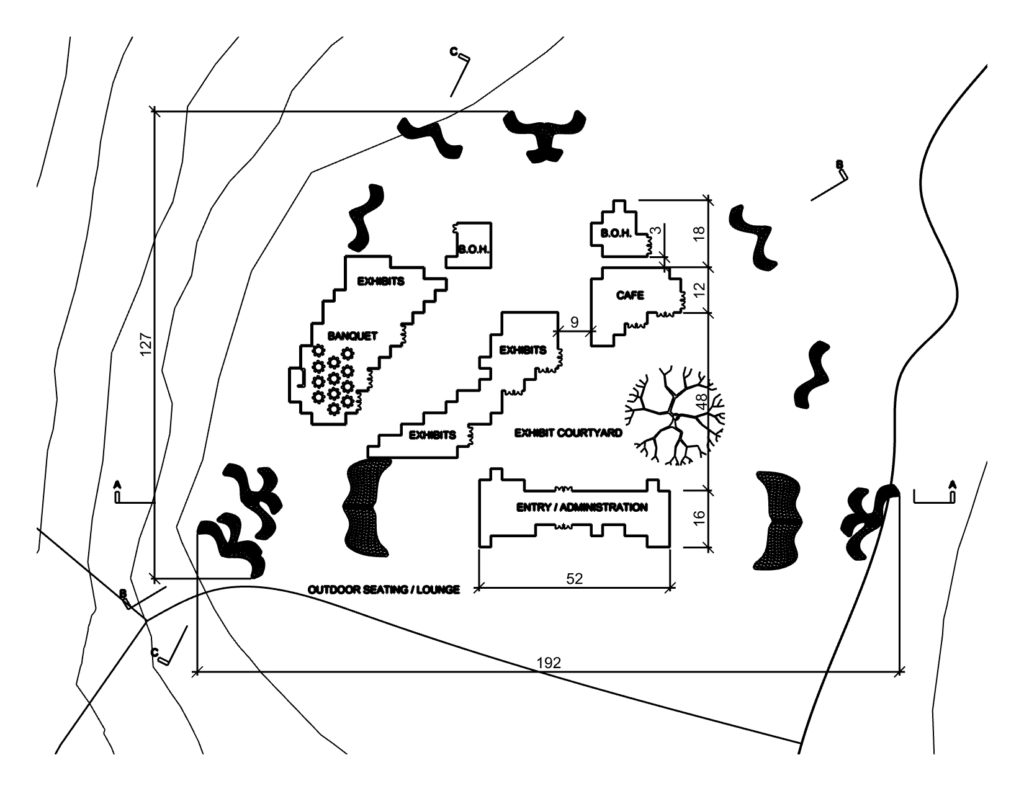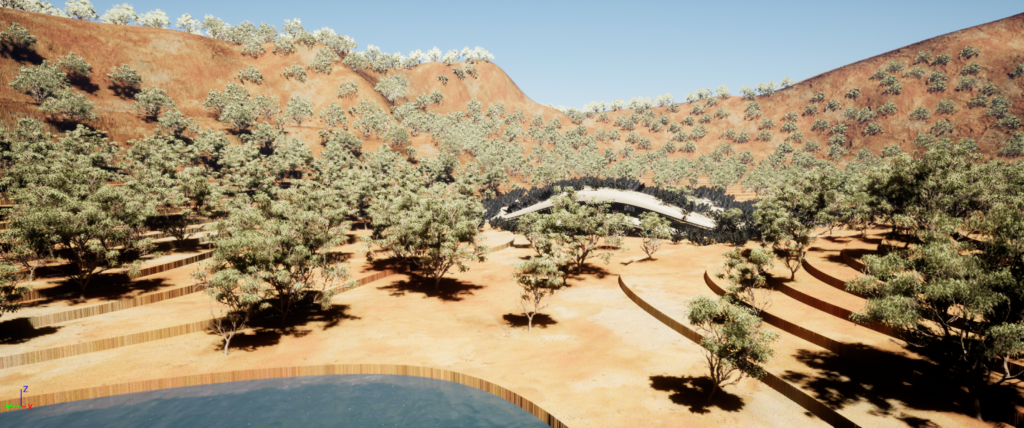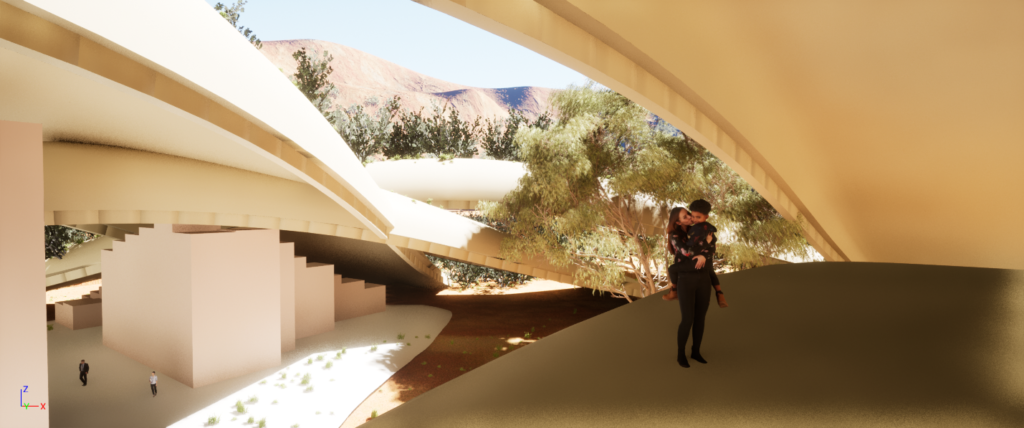As the brief stated we were to design a Wildlife Museum (A Conservation Museum to Raise Awareness About Wild Animal Species Extinction) in the caldera where Lake Agnano exists just outside of Naples, Italy. My first impression was “wow this is such a pristine wilderness in the middle of urbanized development, how could we put a building here?” Once this impression subsided and the project was underway I researched endangered species in the local area of the site. I found that there is a solitary brown bear that is Critically Endangered, this became the basis of my concept for a structure covered with plantings with cave like spaces for the museum.
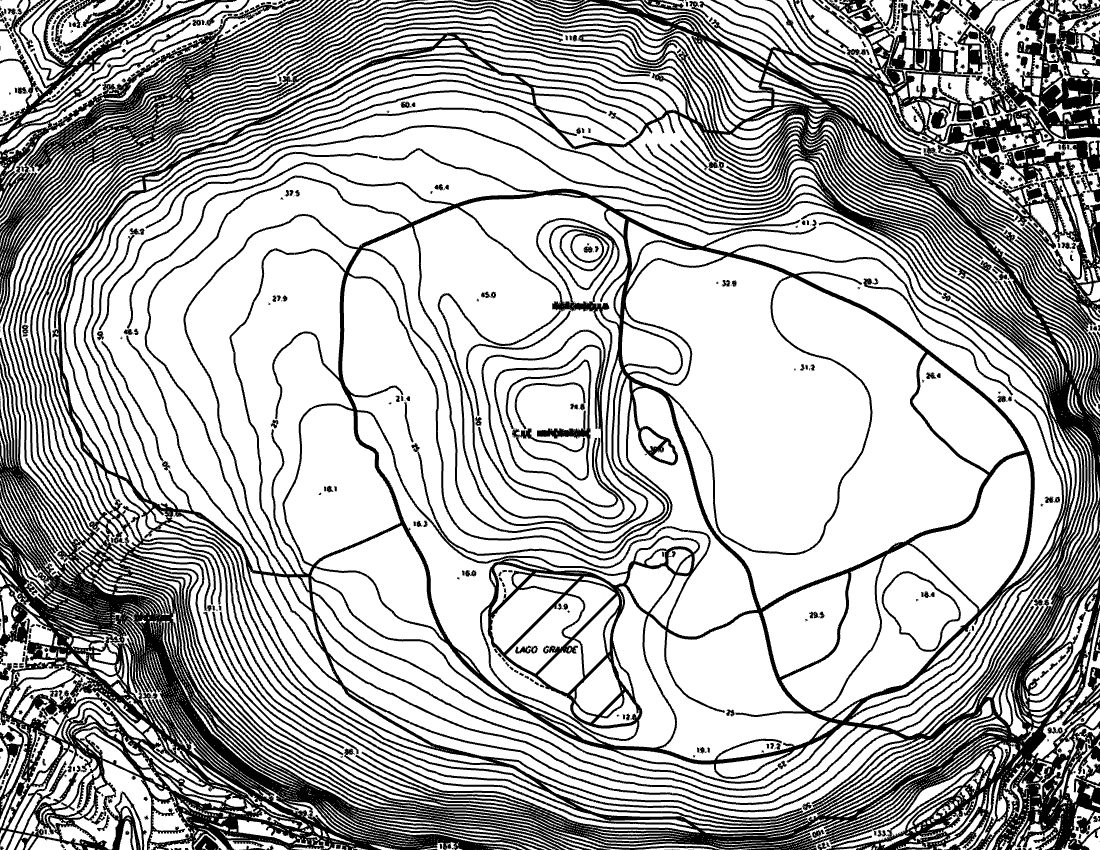
With the brown bear as the animal of focus for the museum, next step was how to integrate the built structure with the landscape. Having worked on tower projects with plantings on raised podiums, I knew it was structurally possible to plant even with some trees atop a structure.
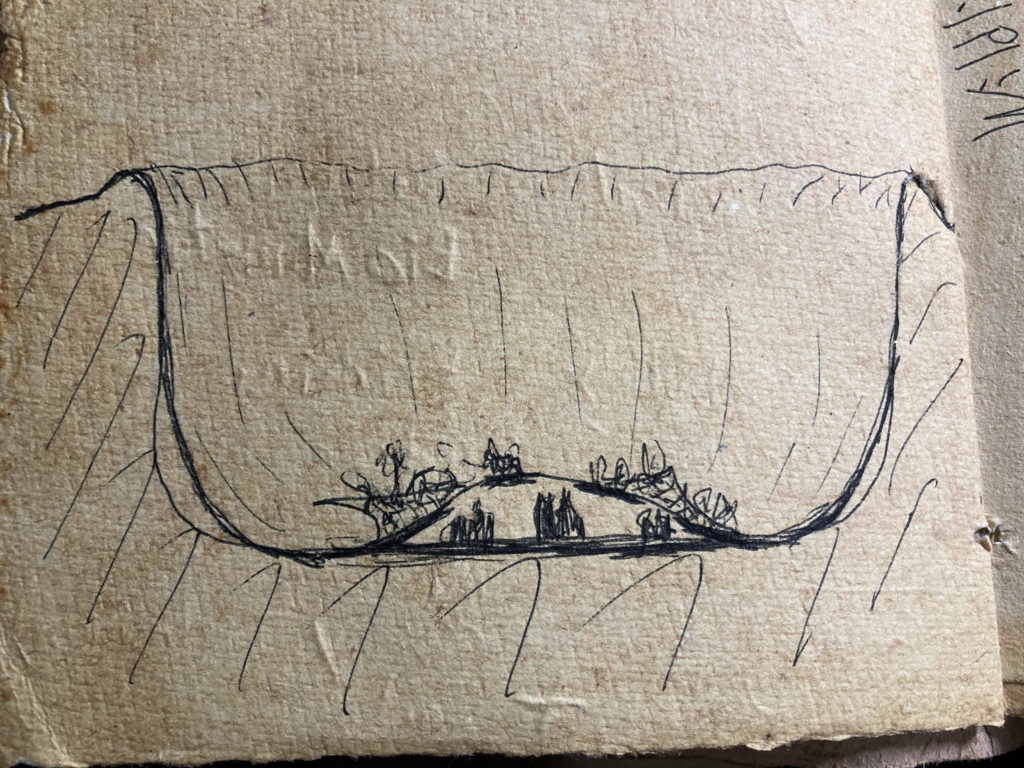
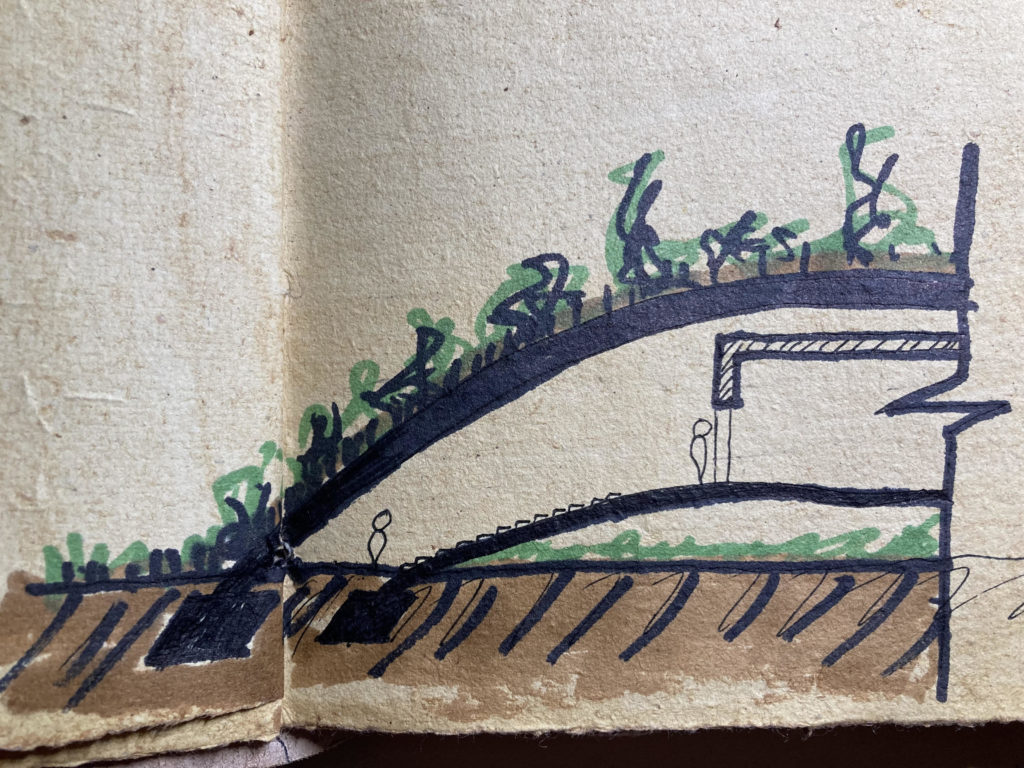
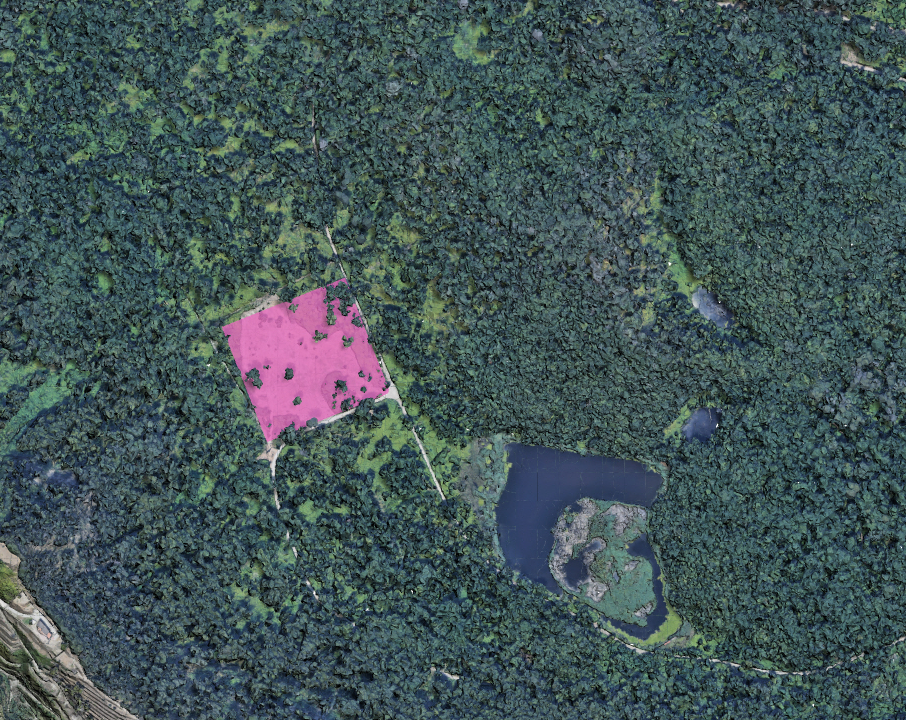
The form finding process started with the one dirt patch within this forest of greenery. This patch (pink square) is about 200 meters square, plenty of space to fit the required program of 15,000 m2 of museum with a max height of 24 m. Initially, the square was the starting point and even though it worked it was decided to distort the square into a trapezoid which presented forms that were more welcoming, like our stretched arms.

The trapezoid was separated into individual line segments that were each set with four points by a unique random selection within a threshold. These points were connected to points on the other lines making sure to cull duplicate lines and only have a maximum of two lines generated from each point. The lines were tested for functional length and elements below the threshold were culled. These lines were then subdivided with perpendicular frames (planes) at each end and the middle. Upon these frames, lines were generated perpendicular to the host line. These three lines were lifted into a surface, that was then meshed and also subdivided. These meshes had there warp and weft lines separated for setting of line strength prior to the form finding process. Kangaroo Physics Solver was used to set anchors and the base properties of the mesh which was then inflated to find an optimal form. Upon further inspection some of the outputs had shells that were undesirably low crowding the pedestrian level, therefore a test was introduced to cull out shells below 4 meters in height. In testing sphere collisions to keep the shells from intersecting, this generated crumpled flat meshes so that was not investigated further.

After Kangaroo provided elevated meshes, these were further discretized in preparation for Karamba3D to perform structural optimization. Again, supports where established along with the shell cross section family of options. With the shear size of these shells the displacement was pretty high with typical concrete thicknesses. After introducing edge beams and a mid beam the shells were better supported. This workflow, coupled with Ladybug Tools radiation analysis on the pedestrian level of the site, provided the opportunity to iterate with Biomorpher (an evolutionary multi-objective solver) which utilized the KPIs of max displacement, max height and the average radiation on the ground level. Upon selection of a well performing option the radiation analysis was utilized for the building footprints of the actual museum. Taking the cells where radiation was lowest (the cave like locations) those cells where merged and extruded to 6meters from the shells to allow for access and viewing across the project at multiple levels. The radiation diagrams, rightfully so, remind me of the blue sun prints done as a child, they are almost ethereal.


Regarding procession, visitors would arrive at the site from the lake side, enter into the Entry / Administration building where ticketing and offices are located. Then visitors are led into a large courtyard with an established tree for coolth and shade. At this point the visitor can choose the cafe or exhibit hall, behind which lies the banquet hall with additional exhibit space. Between all of these buildings are wonderful spaces, some covered, some cavernous while all have views out to the natural environment from within the protection of the cave like structures. Moreover the shells are planted with grasses and small trees to allow visitors to rise up above the forest canopy and see across the caldera to the lake and beyond viewing nature in all its glory.

